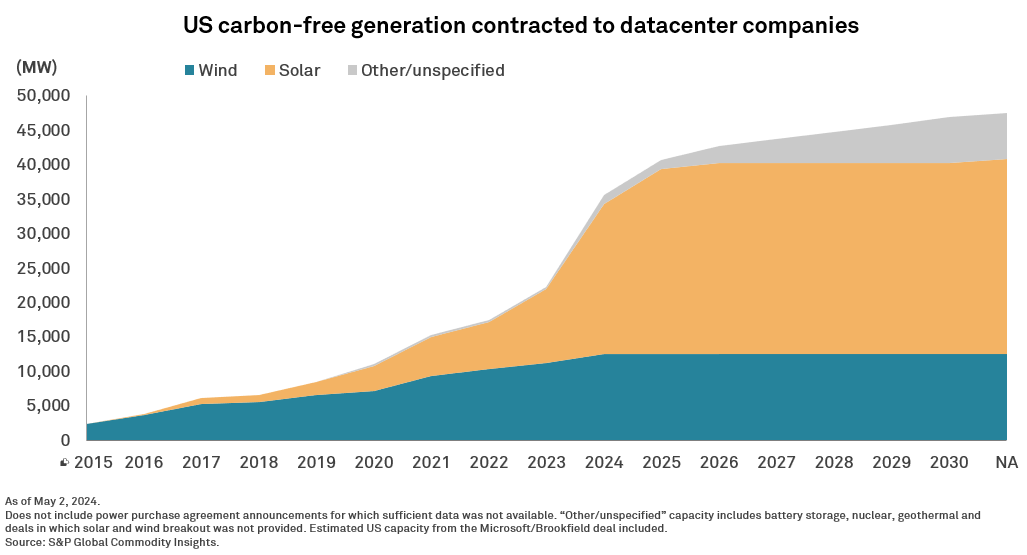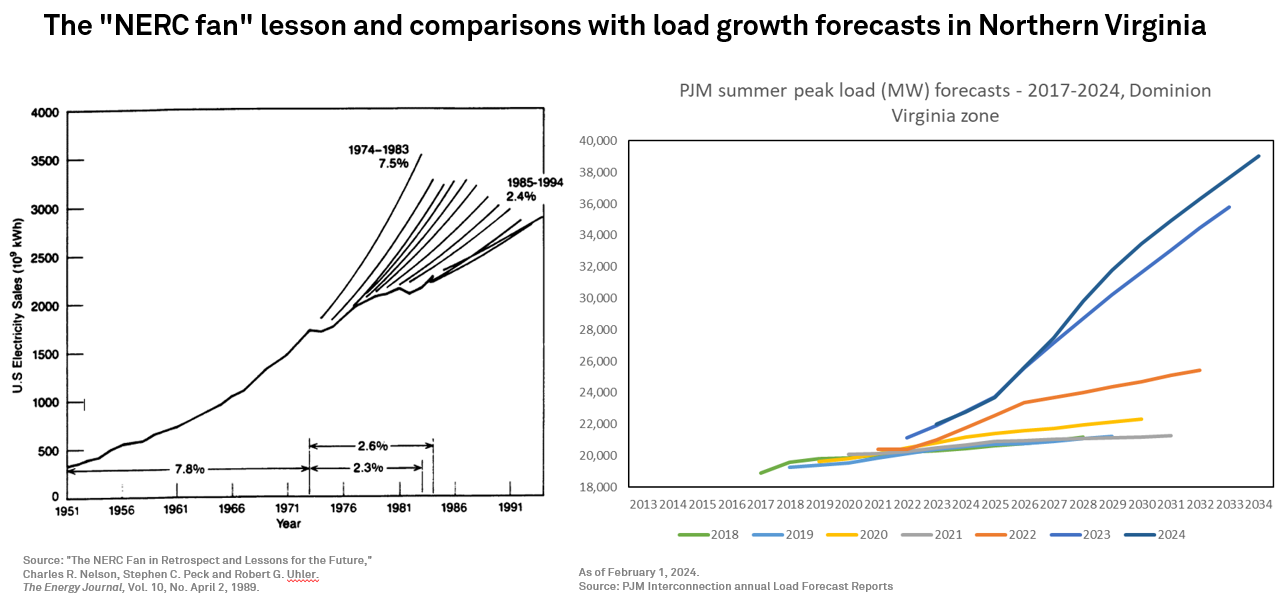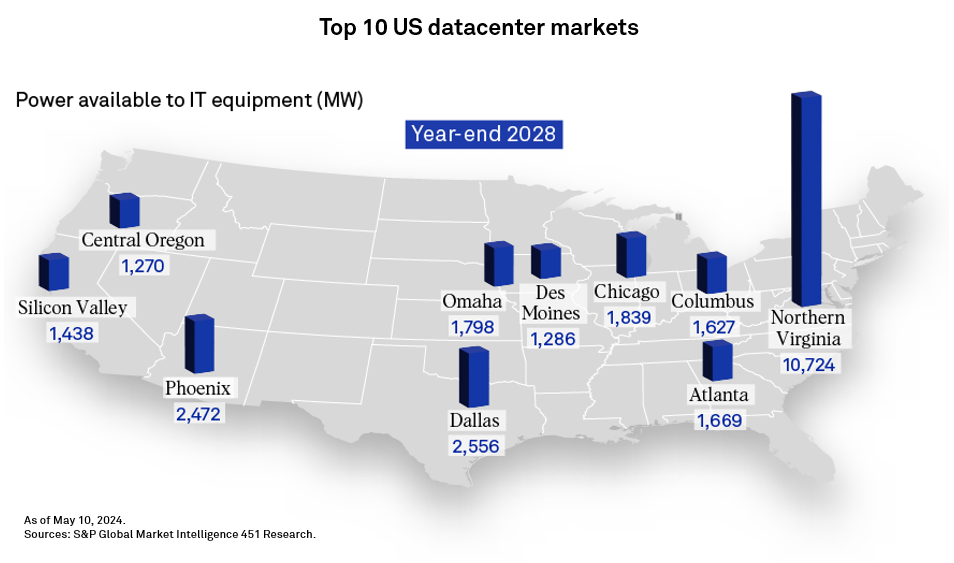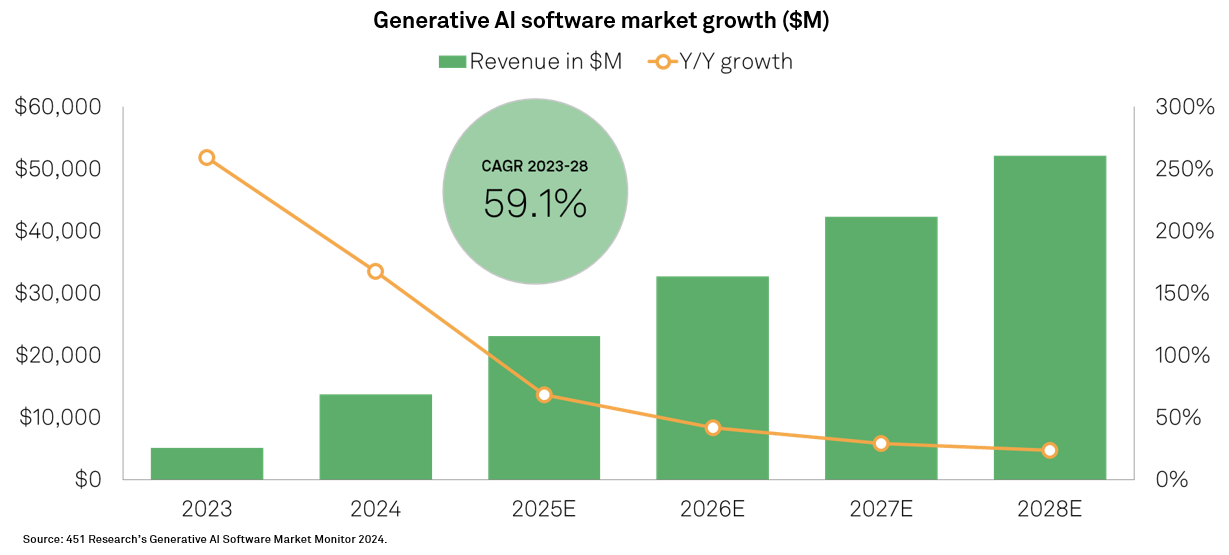S&P Global Offerings
Featured Topics
Featured Products
Events
S&P Global Offerings
Featured Topics
Featured Products
Events
S&P Global Offerings
Featured Topics
Featured Products
Events
Banking & Capital Markets
Economy & Finance
Energy Transition & Sustainability
Technology & Innovation
Podcasts & Newsletters
Banking & Capital Markets
Economy & Finance
Energy Transition & Sustainability
Technology & Innovation
Podcasts & Newsletters
S&P Global Offerings
Featured Topics
Featured Products
Events
Blog — 23 Jul, 2024

By Dan Thompson
In a thought-provoking Artificial Intelligence, Datacenters and Energy: Looming crisis or latest craze? webinar hosted by S&P Global Market Intelligence. The discussion focused on the anticipated increase in energy demand driven by AI and data centers, and how utilities, energy providers, and developers plan to handle this.
Key speakers
- Sarah James (Senior Editor, TMT News) S&P Global Market Intelligence
- Dan Thompson (Principal Research Analyst, Datacenter Services & Infrastructure, 451 Research)S&P Global Market Intelligence
- Melissa Incera (Research Analyst, Data, AI & Analytics, 451 Research) S&P Global Market Intelligence
- Tony Lenoir (Senior Analyst, Energy Research) S&P Global Commodity Insights
- Adam Wilson (Senior Research Analyst) S&P Global Commodity Insights
Agenda
The topic covered included the historical perspective on data centers and energy, the current state of data center energy demand, the impact of AI on data center energy demand, and how utilities and energy providers are responding to these challenges.
#1 Takeaway: AI applications and data centers are driving up energy demand, posing a significant challenge for utilities and energy providers.
The ongoing transition from traditional AI to generative AI is causing a surge in energy demand, particularly in data centers. The new AI models are much more data-hungry and computationally demanding. "One generative AI query can be anywhere from ten to 30% more computationally demanding than a traditional one," explained Melissa Incera. As organizations move up the AI maturity curve, the demands shift and grow. By 2024, the U.S. is expected to reach an annual electricity demand from data centers of over 280 terawatt hours, roughly equivalent to the entire annual energy generation of California.

Data centers are becoming increasingly important in the energy landscape, and their growth is expected to continue. According to Dan Thompson, "If you look towards the year end of 2028, Northern Virginia continues to win a ton of deals. Dallas continues to be important. Phoenix continues to be important." However, Adam Wilson noted that the rapid expansion of data center space raises questions about the impact on the U.S. power load.
Despite the growing energy demand, data center companies are making efforts to use renewable power to offset their energy demand. However, Adam noted that the challenge of meeting the energy appetite of data centers is magnified by the industry's ambitious clean energy objectives. "We are in the midst of a data center boom. Yes, but most of the firm data center commitments in place are to satisfy the still-rising demand for cloud computing services. They predate the current AI craze."
Adding a historical angle, Adam referenced past overestimations by the North American Electric Reliability Corporation (NERC) regarding energy demand. He cautioned that even if current forecasts are halved, the growth in energy demand could still strain the already burdened grids. Wilson underscored the proactive measures being taken by utilities, developers, and datacenter companies to mitigate these challenges.

# 2 Takeaway: The rapid growth of AI and data centers can be both a revenue opportunity and a looming crisis for utilities and energy providers.
The increase in energy demand brought about by the surge in AI applications and data center growth is a double-edged sword for utilities and energy providers. On one hand, it represents a significant revenue opportunity. On the other, it poses a looming crisis in terms of maintaining grid reliability and meeting this voracious energy appetite.
Adam noted that utilities are deploying a lot of renewable capacity to meet the demands of data center companies, which often have self-imposed clean energy commitments. However, he also highlighted that maintaining grid reliability in the face of this rising demand is a major challenge. "We are starting to see questions on the reliability of the overall grid. So, while these data center companies may continue to purchase renewable capacity, there is the concern that there's going to be more natural gas needed on the grid to maintain grid reliability," he said.
Dan echoed this sentiment, warning of potential pushback on data center development from governments and communities. "You'll often hear folks kind of jump to a global number and say, well, you know, like, at the global scale, data centers are only consuming about two to three percent [...] but when we got this down to a local thing, like, that's why, you know, you can't just say, oh, it's just two or 3%, and then try to apply that to northern Virginia because it just doesn't work."

#3 Takeaway: The surge in AI and data center growth poses significant infrastructure and policy challenges that need to be addressed.
The rapid expansion of AI applications and data centers is not just an issue of energy demand; it also presents significant infrastructure and policy challenges. As data centers grow in number and scale, they put a strain on existing infrastructure and require new strategies to manage the heat generated by these systems.

Dan highlighted the transition from traditional data centers, which consume power equivalent to one American home per rack, to AI data centers, which require neighborhood-scale power per rack. "We're talking like small city-scale power just inside of these data centers," he said. However, he also noted that the infrastructure to support this transition is still in its early stages and will need to be re-architected as demand continues to grow.
Adam underscored the need for policy interventions that can expedite the deployment of transmission and distribution infrastructure. "There's been some talk that the Inflation Reduction Act did a lot to further the growth of wind and solar projects. It didn't do enough to foster the growth of transmission and distribution infrastructures that these projects need to transmit power to get connected to the grid," he stated.
The discussion also touched on the strides being made toward more efficient AI technologies and datacenter infrastructures. Melissa highlighted ongoing efforts to enhance model efficiency, hardware solutions, and architectural approaches. Thompson pointed out the rising costs associated with advanced technologies like liquid cooling.


The webinar concluded on a note that recognized the dual nature of the AI datacenter expansion: it is an exciting technological evolution with vast potential but also poses significant challenges that must be navigated with continued innovation and investment in AI and energy solutions.
Insights surfaced:
- The energy requirements of AI models are significantly higher than traditional models, with graphic processing units used in AI models requiring up to ten times more energy per chip than traditional CPUs. - The rapid expansion of the data center space is raising questions about its impact on the US power load. - Data centers have contracted renewable energy capacity to the tune of 36 gigawatts in 2024 and 47 gigawatts in 2030. - Generative AI software market is the fastest growing emerging market, and it is still in the early days. - The US had 270 gigawatts of operating renewable energy capacity and an additional 580 gigawatts in the pipeline. - The explosion in data centers is happening amid broader electrification of the US economy.
Campaign
